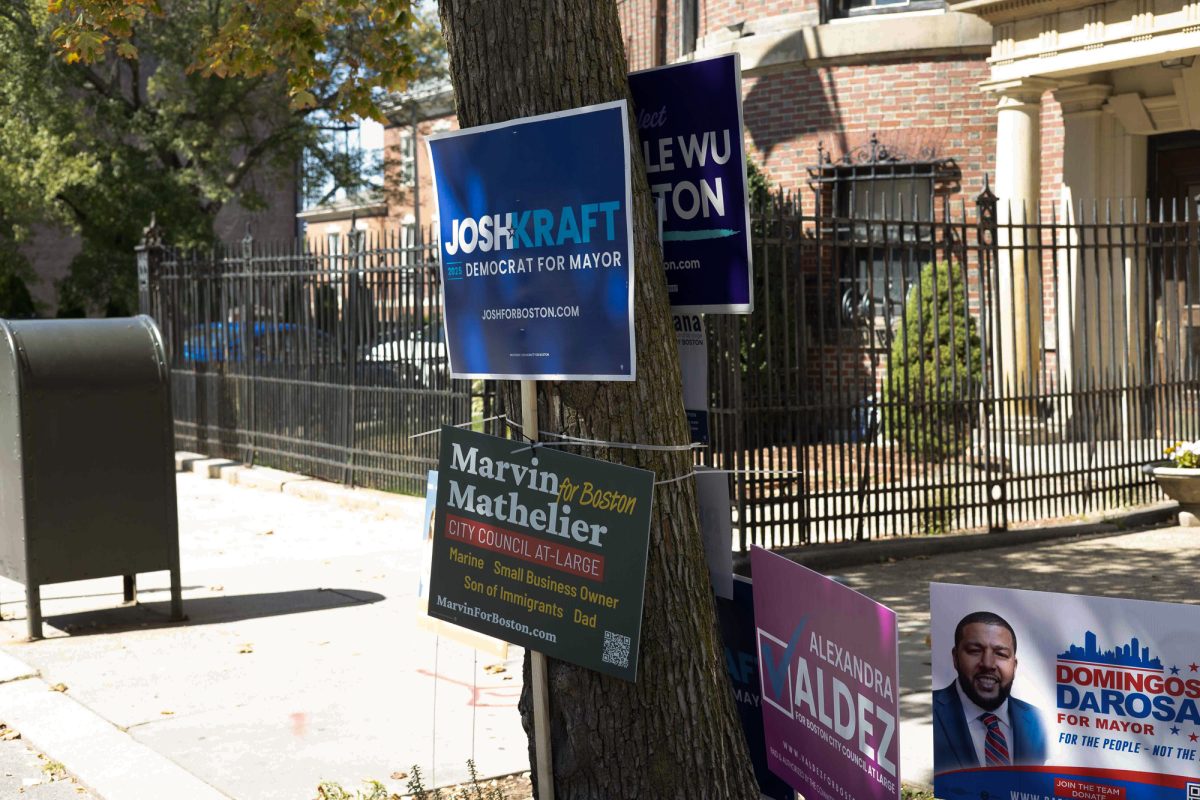Health care isn’t the only industry President Barack Obama’s Administration is trying to alter drastically.
A bill supported by Obama that would end government subsidies to private lenders of federal student loans will be debated and voted on this week in the House of Representatives.
If passed by the House and later the Senate, the Student Aid and Fiscal Responsibility Act would require that all federal loans be originated by the Direct Loan Program. The Direct Loan Program, established in 1993, was created as a competitor to private lenders originating federal loans.
The bill sponsored by U.S. Representative George Miller (D-Calif.) would use the billions of dollars in savings from eliminating subsidies to private lenders to increase Pell Grant and Perkins Loans funding.
Opponents of the bill, including spokespeople for House Republicans and the private student loan industry, said this bill is part of the Obama Administration’s continued movement towards reducing the role of the private sector in American life, much to the detriment of the American public.
‘There is a pattern developing of the federal government a playing larger role in our everyday lives,’ said Alexa Marrero, a spokeswoman for Republicans on the House Education and Labor Committee. ‘The fact that the legislation permanently eliminates the role of the private sector in lending means that choice, competition and innovation will be eliminated in the student loan industry.’
Marrero said the Direct Loan Program was originally designed to be the type of ‘public option’ that Obama wants to create in the health care industry ‘-‘- a mechanism to bring down the borrowing costs and encourage service improvements through competition. Now, Marrero said, the public option will be the only option.
Federal loans originated by the private industry have been administered through the Federal Family Education Loan Program since its inception in 1965. America’s Student Loan Providers, an organization comprised of lenders that have taken part in the family loan program ‘-‘- including Bank of America, Sallie Mae, Citibank and Citizens Bank ‘-‘- has come out staunchly against Miller’s bill.
Kevin Bruns, the organization’s executive director, said he is perplexed that Obama supports choice and competition for consumers in healthcare, but not in the student loan industry.
‘In his health care speech to Congress, Obama said that when there is no competition patients are treated badly, so competition is needed,’ Bruns said. ‘He should apply those same principles to student loans.’
Supporters of the bill counter that students currently have very few choices of lenders in the private industry, and that many of the loans offered are in fact detrimental to student and family finances.
‘The choices are choosing private loans with attractive upfront conditions, outrageous repayment plans and skyrocketing interest rates,’ United States Student Association spokesman Jake Stillwell said. ‘These are not financially healthy loans and the result is debt for years to come.’
MORE MONEY FOR STUDENTS
The bill will put $40 billion towards increasing the maximum Pell Grant amount from $5,550 in 2010 to $6,900 by 2019. Perkins Loans, which are low-cost federal loans, will be funded by more secure sources of credit and will be available to more college campuses. These increases are made possible because in eliminating the subsidies to private lenders, the Congressional Budget Office estimates that the student loan act will save $87 billion over ten years.
The bill will also make it much easier for students to fill out the Free Federal Application for Student Aid, commonly known as FAFSA, by cutting down on the number of questions students and parents have to answer.
Pedro De La Torre, a spokesman for Campus Progress, an organization that trains young progressives, said that the boosts in Pell Grant funding and Perkins Loan accessibility will result in students graduating college with less debt, and will enable more students from low-income families to afford college.
De La Torre cited a New America Foundation study which found that a Pell grant covered 72 percent of average college costs in 1976 and only 33 percent in 2006.
‘If you look at the numbers, college costs have been rising high, but student aid hasn’t been able to keep pace,’ De La Torre said. ‘Congress has a good plan that will take a bunch of money wasted right now and make college more affordable.’
Bruns believes that Pell Grants could be increased and low-cost federal loans offered to more students without ending private sector origination of loans. Bruns supports an alternative plan, the Student Loan Community Proposal, which would end private subsidies but still maintain private sector origination of loans by having the private lenders sell the paper of the loans back to the government.
Marrero said she is concerned that the passage of the student loan act will result in the loss of approximately 30,000 jobs because private sector lenders will be crippled without the federal loans market. Mass job losses would be devastating at a time when unemployment hovers to close to double digits.
However, private companies will still be able to service the loans, which should mitigate against potential job losses and encourage competition among lenders to provide the best customer service, according to spokesmen from the House Education and Labor Committee.
Stillwell said far from damaging the economy, the student aid act should actually provide a long-term boon to it because students will be able to enter the workforce with less debt and more spending power.
‘Students haven’t been able to buy new cars or take job they want because they have needed to pay back banks,’
he said.
MAKING THE SWITCH
If the student aid act passes as expected, all the schools that participate in the family federal program will have to switch to the Direct Loan Program. Currently, 4,654 schools use the family federal program, while only 1,158 institutions utilize the Direct program by July 1, 2010.
Boston University has been part of the program since its inception and will not have to make any changes to its financial aid system. BU Spokesman Colin Riley said that the Direct Loan Program has served BU students well for many years and the school hasn’t considered switching back to the family federal program.
‘Direct loans are in the best interest of our students and reduce the cost of borrowing,’ Riley said.
Riley said he is also excited about the possibility of BU students having access to more federal grant and loan money.
‘Anything that provides increased funding addresses affordability and accessibility and is of benefit to our students,’ Riley said.
Northeastern University, a family federal program member for many years, switched to Direct loans in the 2008-2009 academic year. Tony Erwin, Northeastern’s senior director of financial aid and scholarships, said that the financial crisis hastened NU’s switch to Direct loans.
‘There was a significant concern around the instability in the lending market and the potential for that to spill over into student lending,’ Erwin said. ‘We wanted to make sure funding could continue, and find a secure source of funding for students and families. The more we looked at Direct Loan, we saw a strong program and we knew the money would be there.’
Erwin also said the benefits that used to be associated with family federal loans began to dissipate.
‘When we investigated the change we saw that most private lenders had curtailed borrower benefits and the net cost of a direct loan became the same,’ he said.
POTENTIAL PROBLEMS
Marrero said that many college administrators are reluctant to make the switch in federal loan programs and fear they won’t be able to be ready in time to give accurate financial aid packages to accepted students this spring.
‘We have heard from financial aid administrators concerned about cost of switching over to new computer systems and new models,’ Marrero said. ‘A number of administrators are concerned about not getting up and running before next year.’
Bruns said it took Pennsylvania State University, a school with a sophisticated financial aid office, three to four months to make the switch.
Erwin didn’t specify how long it took Northeastern to switch from Direct and federal family programs, but said the process was smooth.
‘We couldn’t have been happier with response from the Department of Education,’ he said. ‘They were timely and reached out to support us. A big concern about the switch was servicing to students and families, but we have not had one complaint from borrowers or students about servicing.’
In a survey done by the National Association of Student Financial Aid Administrators of 160 schools that switched from the federal family program to the Direct program, 73 percent of schools surveyed said that the switch was easier than they thought. However, for 14 percent of schools the switch took more then 7 months to make.
Bruns said that having every college and university turning to just one lender ‘-‘- the federal government ‘-‘- will paralyze the whole country if there is a system failure.
‘The benefit of a lender-based program is that the operational risks are spread around,’ Bruns said.
Stillwell said despite the potential increase in the volume of Direct loans, students like those at BU who are already in the Direct Loan Program should not expect decreased customer service or operational failures.
‘The Department of Education is making this a top priority,’ Stillwell said. ‘I’m sure that they will have services available to the colleges to help in the transition.’
The bill is expected to pass easily in the House, but may move more slowly in the Senate because Sen. Tom Harkin (D-Iowa) is just transitioning into his role as the chairman of the Senate Committee on Health, Education, Labor and Pensions. Harkin moved into that role after the death of Massachusetts Sen. Edward Kennedy.
De La Torre of Campus Progress predicts that Obama will have a bill sign to by October 15, which he says should be a day to celebrate for students.
‘If the bill passes students will have a much more stable loan system,’ he said.


















































































































barney99fred.webnode.com • Apr 14, 2013 at 1:38 pm
Attractive section of content. I just stumbled upon your web site and in accession capital to assert
that I acquire actually enjoyed account your blog posts. Any way I
will be subscribing to your augment and even I achievement you access consistently fast.